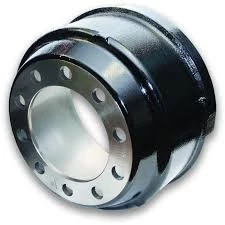
-
 Afrikaans
Afrikaans -
 Albanian
Albanian -
 Amharic
Amharic -
 Arabic
Arabic -
 Armenian
Armenian -
 Azerbaijani
Azerbaijani -
 Basque
Basque -
 Belarusian
Belarusian -
 Bengali
Bengali -
 Bosnian
Bosnian -
 Bulgarian
Bulgarian -
 Catalan
Catalan -
 Cebuano
Cebuano -
 Corsican
Corsican -
 Croatian
Croatian -
 Czech
Czech -
 Danish
Danish -
 Dutch
Dutch -
 English
English -
 Esperanto
Esperanto -
 Estonian
Estonian -
 Finnish
Finnish -
 French
French -
 Frisian
Frisian -
 Galician
Galician -
 Georgian
Georgian -
 German
German -
 Greek
Greek -
 Gujarati
Gujarati -
 Haitian Creole
Haitian Creole -
 hausa
hausa -
 hawaiian
hawaiian -
 Hebrew
Hebrew -
 Hindi
Hindi -
 Miao
Miao -
 Hungarian
Hungarian -
 Icelandic
Icelandic -
 igbo
igbo -
 Indonesian
Indonesian -
 irish
irish -
 Italian
Italian -
 Japanese
Japanese -
 Javanese
Javanese -
 Kannada
Kannada -
 kazakh
kazakh -
 Khmer
Khmer -
 Rwandese
Rwandese -
 Korean
Korean -
 Kurdish
Kurdish -
 Kyrgyz
Kyrgyz -
 Lao
Lao -
 Latin
Latin -
 Latvian
Latvian -
 Lithuanian
Lithuanian -
 Luxembourgish
Luxembourgish -
 Macedonian
Macedonian -
 Malgashi
Malgashi -
 Malay
Malay -
 Malayalam
Malayalam -
 Maltese
Maltese -
 Maori
Maori -
 Marathi
Marathi -
 Mongolian
Mongolian -
 Myanmar
Myanmar -
 Nepali
Nepali -
 Norwegian
Norwegian -
 Norwegian
Norwegian -
 Occitan
Occitan -
 Pashto
Pashto -
 Persian
Persian -
 Polish
Polish -
 Portuguese
Portuguese -
 Punjabi
Punjabi -
 Romanian
Romanian -
 Russian
Russian -
 Samoan
Samoan -
 Scottish Gaelic
Scottish Gaelic -
 Serbian
Serbian -
 Sesotho
Sesotho -
 Shona
Shona -
 Sindhi
Sindhi -
 Sinhala
Sinhala -
 Slovak
Slovak -
 Slovenian
Slovenian -
 Somali
Somali -
 Spanish
Spanish -
 Sundanese
Sundanese -
 Swahili
Swahili -
 Swedish
Swedish -
 Tagalog
Tagalog -
 Tajik
Tajik -
 Tamil
Tamil -
 Tatar
Tatar -
 Telugu
Telugu -
 Thai
Thai -
 Turkish
Turkish -
 Turkmen
Turkmen -
 Ukrainian
Ukrainian -
 Urdu
Urdu -
 Uighur
Uighur -
 Uzbek
Uzbek -
 Vietnamese
Vietnamese -
 Welsh
Welsh -
 Bantu
Bantu -
 Yiddish
Yiddish -
 Yoruba
Yoruba -
 Zulu
Zulu
how to break in drum brakes
How to Break in Drum Brakes A Step-by-Step Guide
Breaking in drum brakes is a crucial process that can significantly enhance their performance and longevity. Properly seating the brake shoes against the drum ensures optimal contact and minimizes the chances of noise and wear. Here’s a step-by-step guide on how to effectively break in new drum brakes.
1. Preparation
Before you begin, ensure that your vehicle is parked on a flat, stable surface. Engage the parking brake for added safety. Gather necessary tools such as a jack, jack stands, and a lug wrench if you need to access the drum brakes.
2. Installation (if applicable)
If you are installing new drum brakes, follow the manufacturer’s guidelines for installation. Ensure that all components, including the brake shoes, springs, and adjusters, are positioned correctly. After installation, check that the brake drum rotates freely before proceeding to the next step.
3. Initial Brake Test
Once the brakes are installed, it is important to perform a soft brake test. This involves driving your vehicle at a low speed (around 25 mph) and lightly applying the brakes. Do this several times to allow the shoes to start conforming to the drum’s surface. Ensure this is done in a safe, open area to avoid any potential accidents.
4. Performing the Break-In Process
how to break in drum brakes

Now, it's time to perform the brake-in procedure. Drive the vehicle at a moderate speed (approximately 30-40 mph) and apply the brakes firmly, but not to the point of locking them up. Aim for deceleration rather than a complete stop. Do this 6-10 times, allowing a cooling period between each application to prevent overheating.
The key is to gradually increase the intensity of your braking. Each braking action should be a bit firmer than the last. This process helps evenly distribute the brake shoe material onto the drum, creating a better bond and enhancing overall performance.
5. Cooling Period
After the initial break-in, give the brakes some time to cool down. Allow at least 15-30 minutes of driving without using the brakes if possible. This helps to dissipate heat and prevents any potential glazing of the brake shoes.
6. Final Checks
Once the break-in process is complete, conduct a final inspection. Listen for any unusual noises while driving, and check for proper pedal feel. If you notice any issues, it may be a sign that adjustment is necessary.
Conclusion
Breaking in your drum brakes properly is essential for achieving optimal performance and longevity. Adhering to these steps can help ensure that your brakes operate smoothly and effectively, providing the safety and reliability you need while driving. Always consult your vehicle’s manual for any specific instructions or recommendations regarding the brake break-in process.
-
What Are Drum BrakesNewsJul.07,2025
-
Understanding Brake Drum MaterialNewsJul.07,2025
-
Semi-Trailer Brake Drum: A Key Component for Extreme Loads and Long-Distance TransportNewsJul.07,2025
-
Drum Brake Pads for SaleNewsJul.07,2025
-
Brake Drums for SaleNewsJul.07,2025
-
Brake Drum ManufacturerNewsJul.07,2025
-
Aluminum Brake Drums: The Future of High-Performance CarsNewsJul.07,2025
